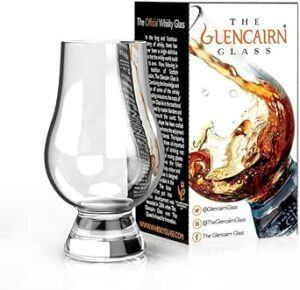Tracing the Rich Heritage: The History of Whisky Unveiled
In the world of spirits, few beverages carry as rich a history and as diverse a flavor profile as whisky. From its humble beginnings in ancient civilizations to its status as a global phenomenon today, whisky has captivated the hearts and palates of enthusiasts worldwide. Join us on a journey through time as we explore the fascinating history of whisky, from its origins to its modern-day allure.
Origins and Early Beginnings
Whisky’s story begins in the mists of time, with early evidence of distilled spirits dating back to ancient civilizations such as Mesopotamia and Egypt. These early iterations were more akin to crude forms of alcohol rather than the refined whisky we know today. It was the Celts and Gaelic tribes of Scotland and Ireland who are credited with refining the art of distillation and laying the groundwork for modern whisky production.
The Gaelic word “uisge beatha,” meaning “water of life,” is believed to be the origin of the word whisky. Distillation techniques spread throughout Europe, evolving over centuries, with monks in Ireland and Scotland perfecting the craft. By the late Middle Ages, whisky production was firmly established in these regions, with monasteries and farms producing spirits for medicinal and recreational purposes.
The Scotch Revolution
Scotland holds a special place in whisky history, being the birthplace of Scotch whisky. The exact origins of Scotch whisky are shrouded in myth and legend, but it is widely believed that monks in Scotland began distilling whisky as early as the 15th century. However, it wasn’t until the 18th century that Scotch whisky production began to flourish, thanks in part to improvements in distillation technology and changes in taxation laws.
The introduction of the column still and the repeal of various taxes and regulations in the 19th century led to a boom in Scotch whisky production. Distilleries such as Glenlivet, Glenfiddich, and Macallan gained prominence during this period, laying the foundation for Scotland’s reputation as the world’s premier whisky-producing nation.
Irish Whiskey: A Storied Tradition
Meanwhile, across the Irish Sea, a parallel whisky tradition was taking shape. Irish whiskey, spelled with an ‘e’, has its own unique characteristics and production methods. Distilleries in Ireland were among the first to produce whiskey on a commercial scale, exporting their product throughout Europe and beyond.
The 19th century was a golden age for Irish whiskey, with distilleries such as Jameson, Bushmills, and Powers enjoying widespread success. However, the industry faced numerous challenges in the 20th century, including Prohibition in the United States and the Irish War of Independence. Despite these setbacks, Irish whiskey has experienced a renaissance in recent years, with new distilleries emerging and old ones being revived.
Whisky Goes Global
The 20th century saw whisky spread beyond the shores of Scotland and Ireland, with countries such as the United States, Canada, and Japan making their mark on the whisky world. American whiskey, including bourbon and rye, gained popularity both domestically and internationally, with brands like Jack Daniel’s and Maker’s Mark becoming household names.
In Canada, whisky production dates back to the 18th century, with Canadian whisky known for its smoothness and versatility. Japanese whisky, inspired by Scotch whisky, has also gained recognition for its craftsmanship and attention to detail, winning numerous awards on the world stage.
Modern Trends and Innovations
Today, whisky continues to evolve, with new trends and innovations shaping the industry. Craft distilleries are on the rise, producing small-batch whiskies with unique flavor profiles. Whisky regions outside of Scotland and Ireland, such as Tasmania and Taiwan, are gaining attention for their quality spirits.
Meanwhile, consumer preferences are shifting towards higher-end and limited-edition whiskies, driving demand for rare and collectible bottles. Whisky tourism has also become increasingly popular, with enthusiasts flocking to distilleries around the world to learn about the production process and sample different expressions.
Understanding Whisky Tasting
Tasting whisky is more than just taking a sip – it’s a multisensory experience that engages all your senses. Here’s how to approach a whisky tasting like a pro:
Appearance
Start by observing the color and clarity of the whisky. Is it pale gold, amber, or dark mahogany? Swirl the whisky in your glass and observe its legs – the trails that form as the liquid runs down the sides of the glass can provide clues about its viscosity and age.
Aroma
Next, bring the glass to your nose and take a deep breath. What do you smell? Note the aromas of fruit, spice, oak, caramel, and other nuances that contribute to the whisky’s bouquet. Take your time to savor the complex layers of aroma.
Taste
Now, take a small sip of the whisky and let it coat your palate. Pay attention to the flavors that emerge – are there notes of tropical fruit, vanilla, chocolate, or spices? Consider the whisky’s sweetness, acidity, and balance as you explore its taste profile.
Finish
Finally, swallow the whisky and observe the lingering finish. Is it smooth and mellow, or does it leave a lingering warmth and complexity on the palate? The finish can provide insights into the whisky’s quality and craftsmanship.
Whisky Review Criteria
When conducting a whisky tasting and review, consider the following criteria to evaluate and appreciate each expression:
- Appearance: Assess the color, clarity, and viscosity of the whisky.
- Aroma: Describe the aromas present, including fruity, floral, spicy, and oaky notes.
- Taste: Evaluate the flavor profile, sweetness, acidity, and balance of the whisky.
- Finish: Consider the length, intensity, and complexity of the whisky’s finish.
- Overall Impression: Summarize your overall experience and whether you would recommend the whisky to others.
Sample Whisky Tasting Notes
To give you a taste of what to expect, here are sample tasting notes for three different types of whisky:
Glenlivet 12 Year Old Whisky
- Appearance: Bright gold with subtle green highlights.
- Aroma: Fresh and fruity with notes of green apple, pear, and a hint of vanilla.
- Taste: Smooth and well-balanced with flavors of citrus, toffee, and a touch of oak.
- Finish: Medium length with a gentle, lingering sweetness and a hint of spice.
- Overall Impression: A classic Speyside whisky that is approachable and enjoyable, perfect for both newcomers and seasoned enthusiasts.
Jameson Irish Whiskey
- Appearance: Light amber with golden hues.
- Aroma: Light floral fragrance with a mix of spicy wood and sweet notes.
- Taste: Smooth and mellow with flavors of vanilla, nuts, and a hint of sweet sherry.
- Finish: Clean and crisp with a gentle fade of spice and vanilla.
- Overall Impression: A versatile and easy-drinking whiskey that is perfect for any occasion, whether neat, on the rocks, or in cocktails.
Yamazaki 12 Year Old Japanese Whisky
- Appearance: Rich amber with a slight ruby undertone.
- Aroma: Complex and layered with aromas of dried fruit, honey, and a touch of cinnamon.
- Taste: Full-bodied and rich with flavors of dark chocolate, oak, and a hint of smoke.
- Finish: Long and elegant with a balance of sweetness and spice.
- Overall Impression: A sophisticated and well-crafted whisky that showcases the artistry of Japanese distillation, ideal for special occasions.
Conclusion: Cheers to Whisky Exploration!
From its ancient origins to its modern-day allure, whisky has truly stood the test of time. Its rich history, diverse flavors, and enduring appeal continue to captivate drinkers around the world. Whether enjoyed neat, on the rocks, or in a cocktail, whisky remains a symbol of craftsmanship, tradition, and conviviality.
So, the next time you raise a glass of whisky, take a moment to savor not just the taste, but the centuries of history and craftsmanship that went into its creation. Cheers to the water of life 
Check out more:
-
-
- What is Whiskey?
- History and Origins of Whiskey
- Types of Whiskey: Scotch, Bourbon, Rye, Irish, and more
- The Whiskey Making Process
-
- Ingredients: Grains, Water, Yeast
- Mashing
- Fermentation
- Distillation
- Aging in Barrels
- Bottling and Packaging
- Exploring Whiskey Regions
-
- Scotch Whiskey Regions: Highland, Lowland, Speyside, Islay, Campbeltown
- Bourbon Whiskey Regions: Kentucky and Beyond
- Irish Whiskey Regions
- Other Whiskey Producing Regions
- Understanding Whiskey Labels and Classifications
-
- Age Statements
- Single Malt vs. Blended Whiskey
- Cask Strength, Single Barrel, and Small Batch Whiskeys
- Grain Whiskey, Pot Still Whiskey, and Malt Whiskey
- Tasting and Evaluating Whiskey
-
- Whiskey Glassware
- Proper Whiskey Tasting Techniques
- Flavor Profiles: Sweet, Spicy, Smoky, Fruity, Nutty, and more
- Identifying Characteristics: Nose, Palate, Finish
- Pairing Whiskey with Food
-
- Complementary Flavors and Textures
- Whiskey and Cheese Pairings
- Whiskey and Chocolate Pairings
- Whiskey Cocktails and Food Pairings
- Collecting and Investing in Whiskey
-
- Rare and Collectible Whiskeys
- Whiskey Investment Strategies
- Proper Storage and Care of Whiskey
- Whiskey Culture and Traditions
-
- Whiskey Drinking Etiquette
- Famous Whiskey Drinkers and Stories
- Whiskey Festivals and Events
- Whiskey Cocktails and Recipes
-
- Classic Whiskey Cocktails: Old Fashioned, Manhattan, Whiskey Sour, and more
- Modern Twists on Whiskey Drinks
- Whiskey Infusions and DIY Cocktail Ingredients
Whiskey Aging Process: How Time Impacts Flavor
Immerse Yourself In Whiskey Culture: Etiquette, Legends, And Celebrations
The Art Of Whiskey Collecting And Investing: A Connoisseur’s Guide
Unveiling The Spirited Saga: A Journey Through The History Of Whisky
-
Disclaimer: This post contains affiliate links. If you purchase through these links, I may earn a small commission at no additional cost to you. .
